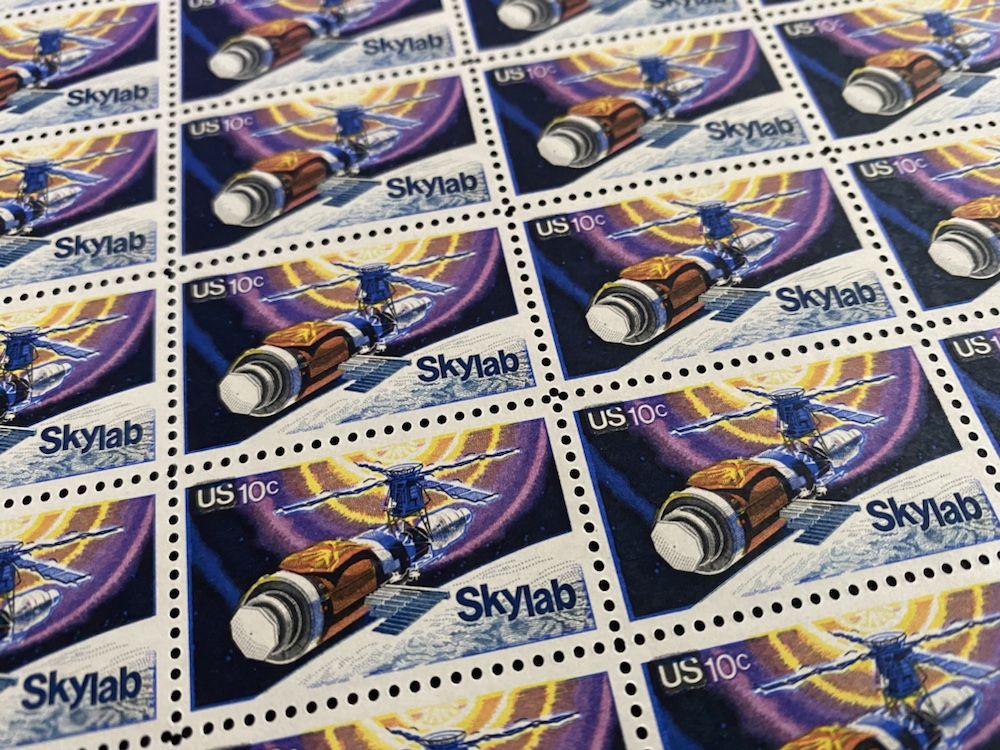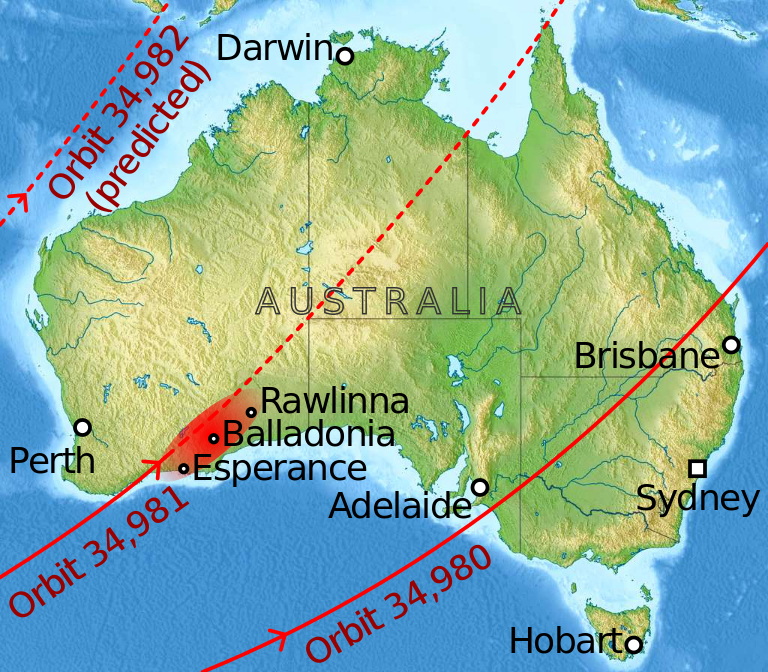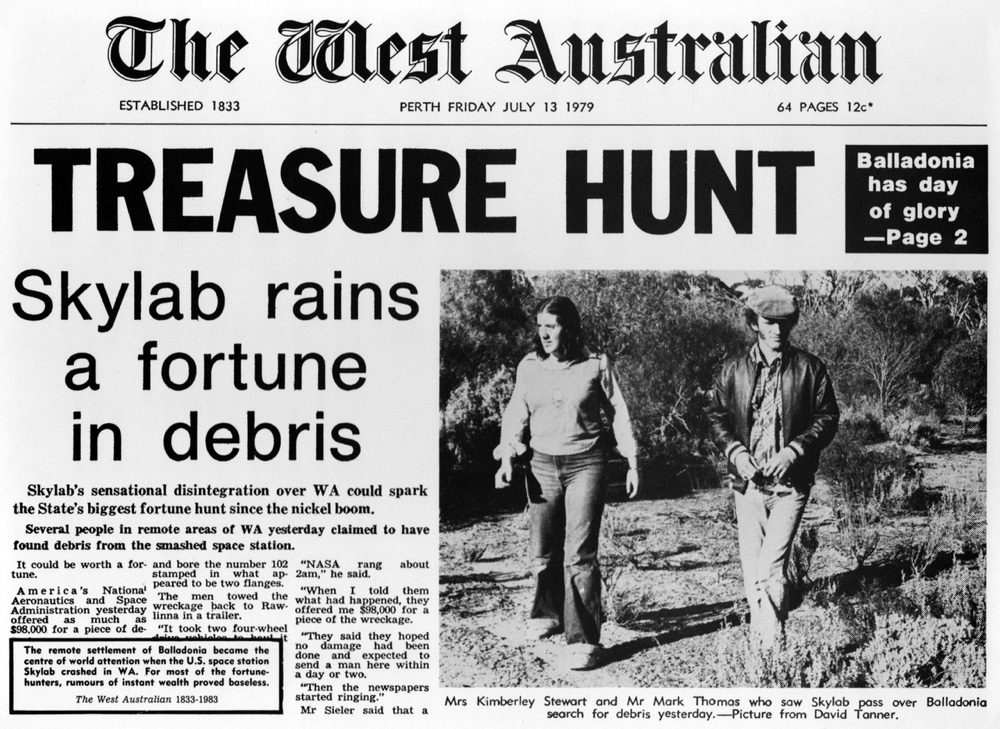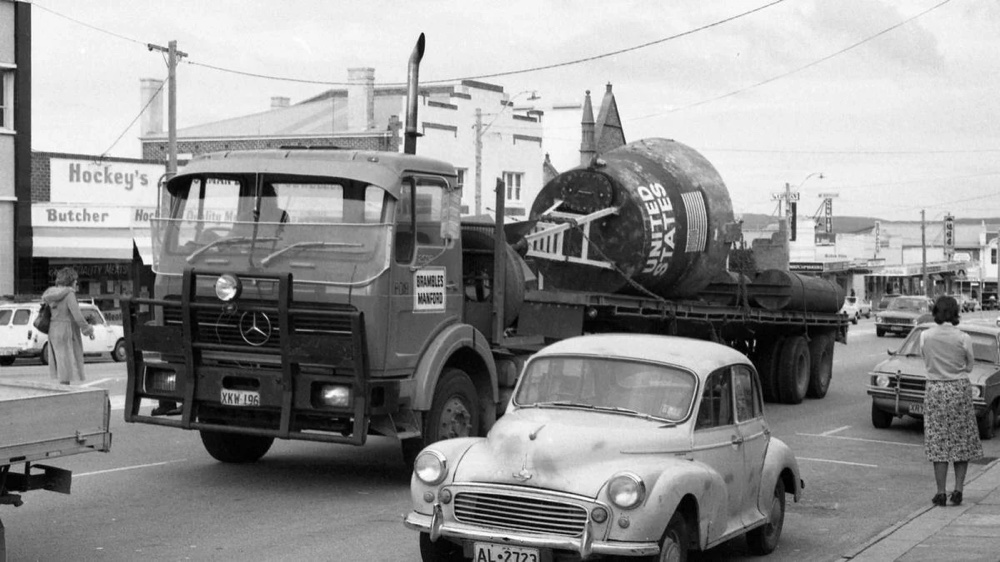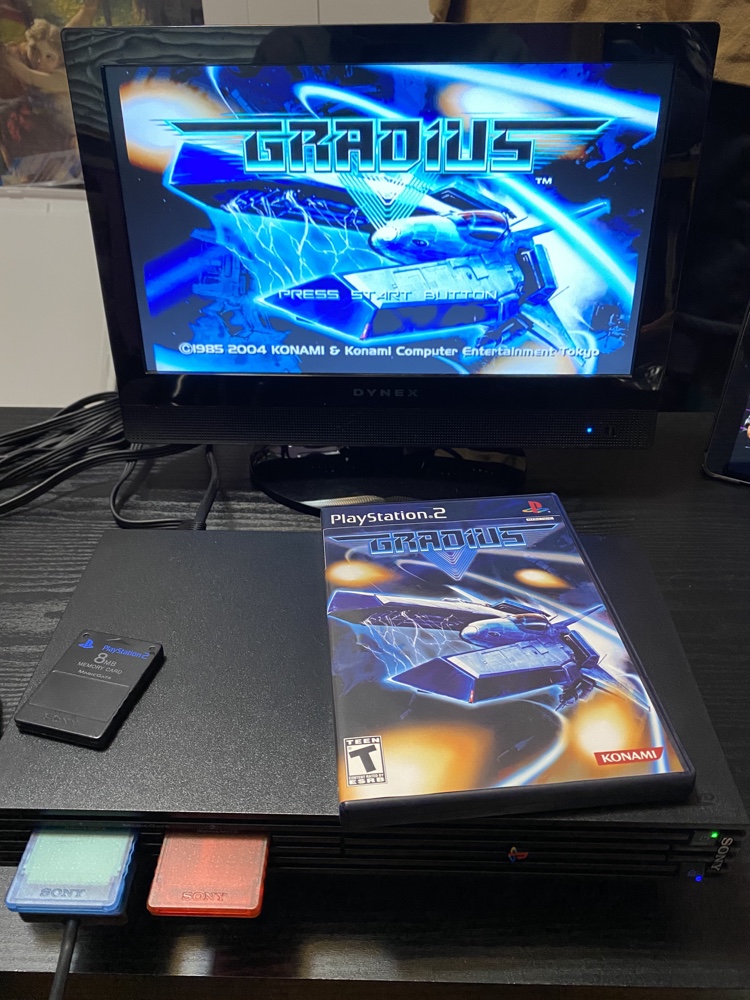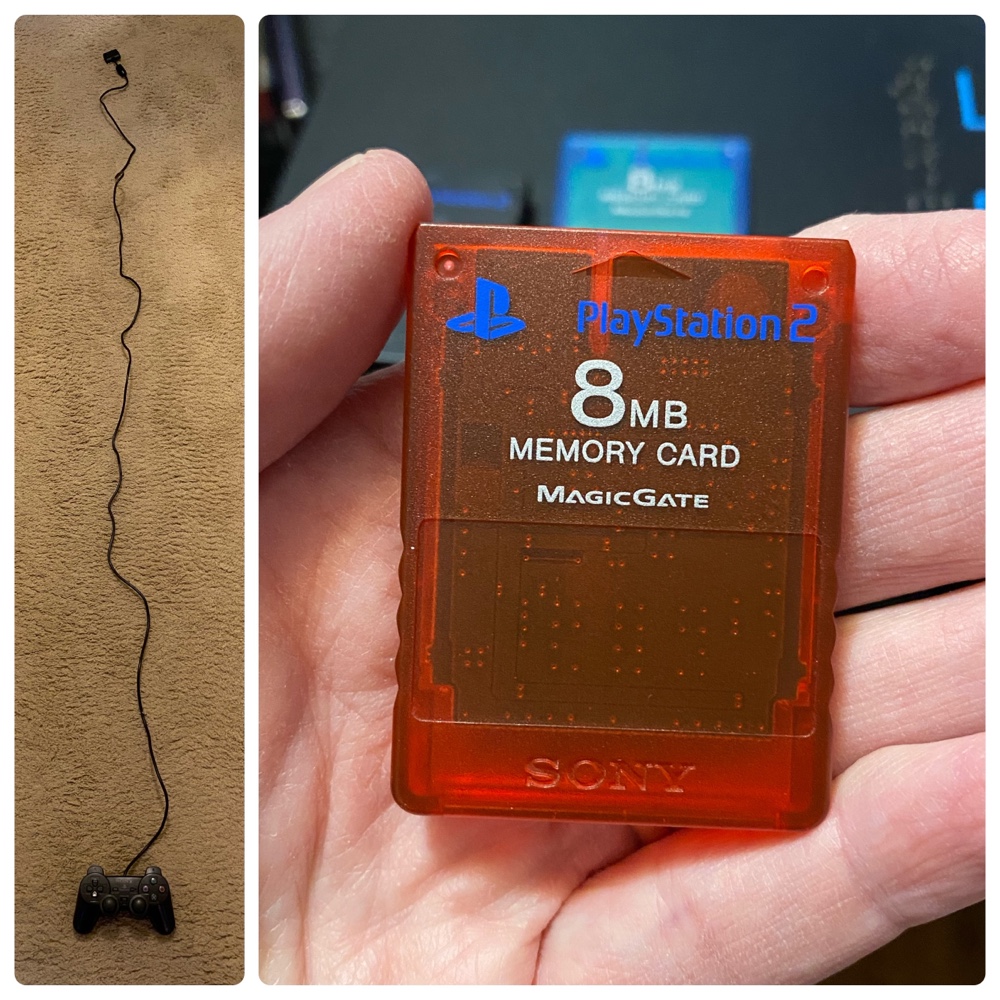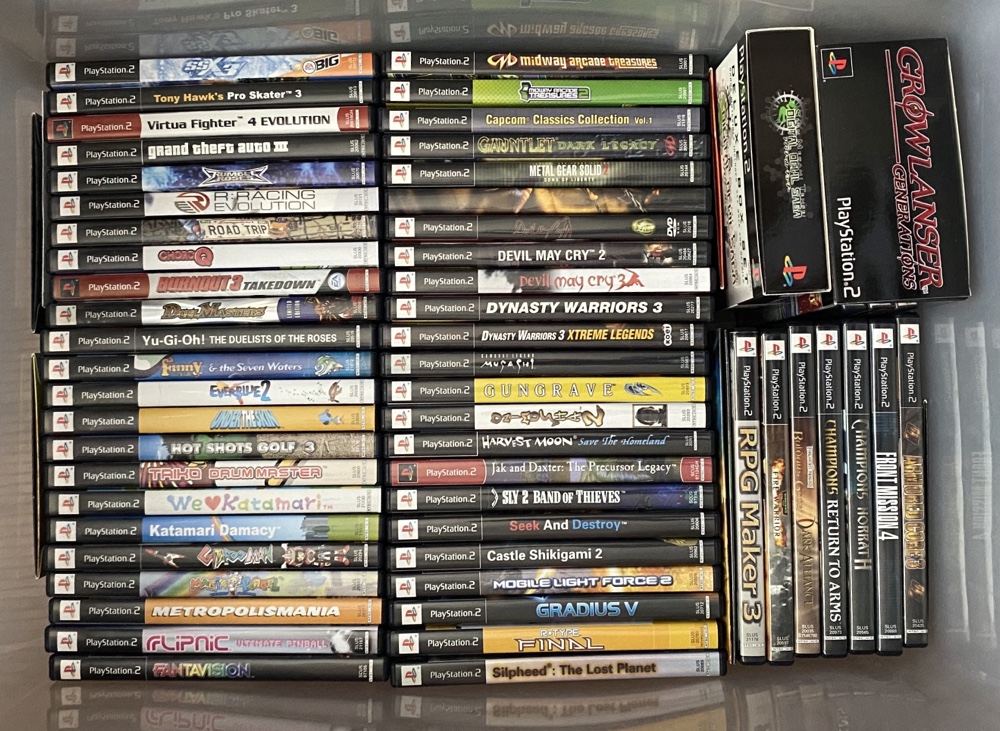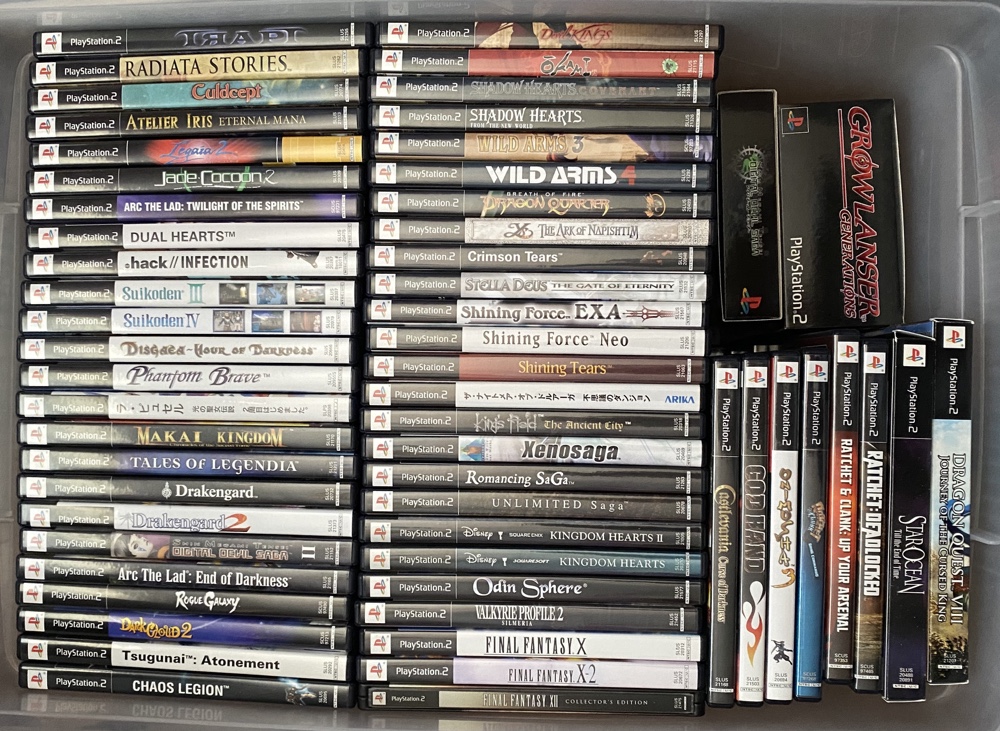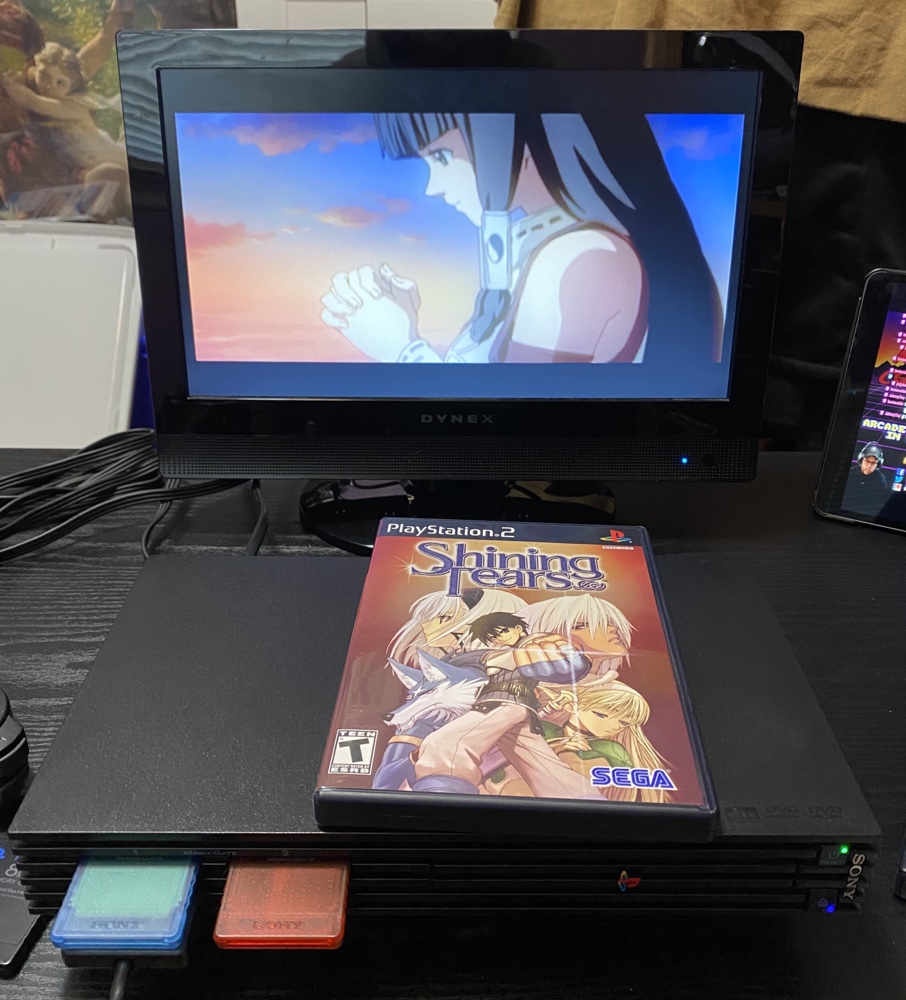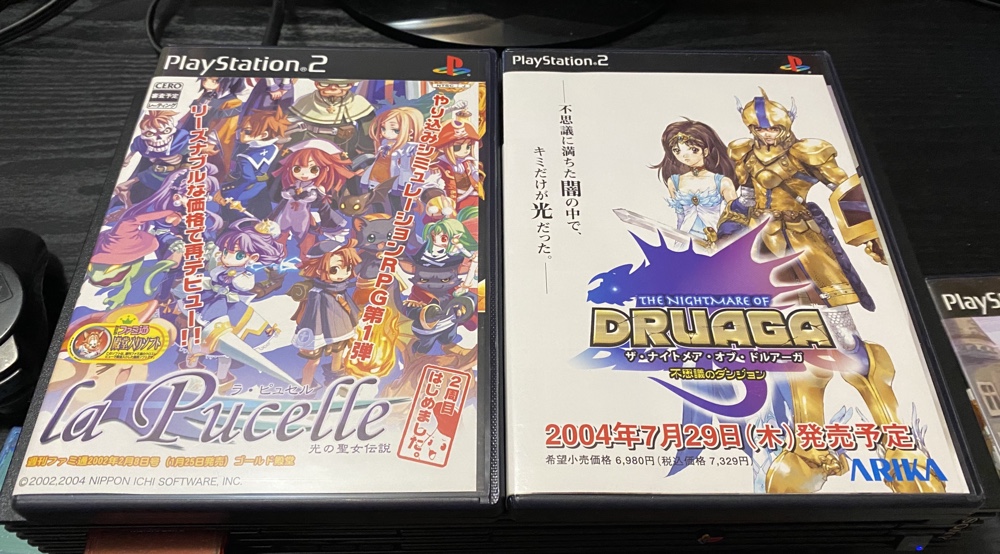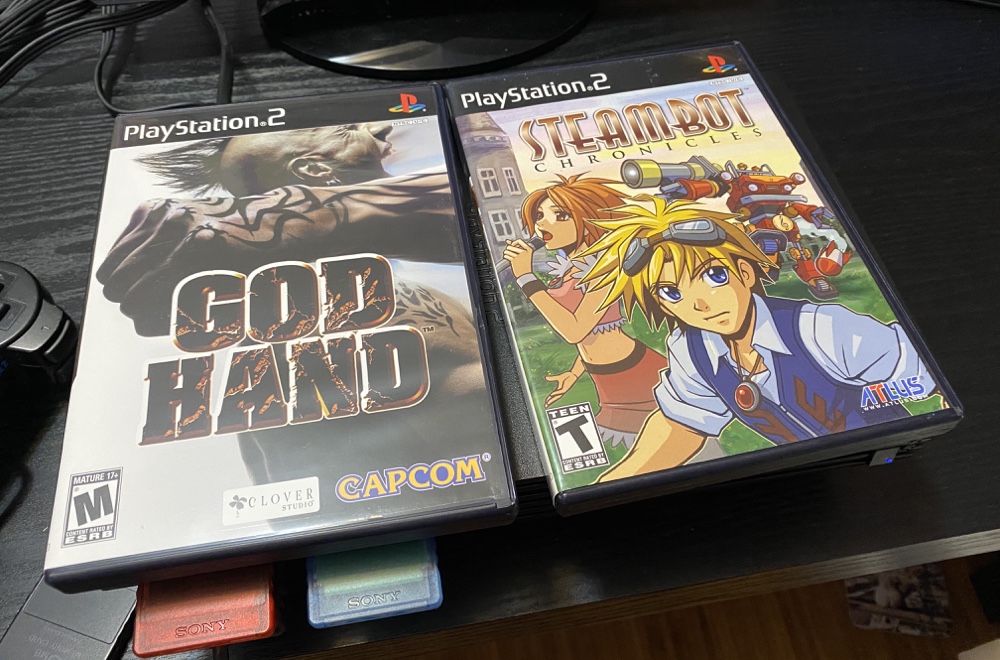I’ve been thinking about memories a lot recently, and how most fade and change over time whilst some remain sharp. Recent discussions with mum have shown me some of my childhood memories are flat-out wrong, which makes me wonder about others.
Spend enough time thinking/talking/listening about arcade gaming and you’ll invariably think/say/hear about how most people that were big on gaming in the arcades usually remember exactly where or when they first played a given game. This is true for me as well, be it Exed Exes in a Pacfic Highway fish’n’chip shop in Charlestown or Xain’d Sleena in the grubby foyer of that cinema on Hunter Street that became an evangelical church (and is now closed?) just to name a couple. I spent innumerable hours in arcades in those days playing every game and I can fondly recall so much of it.
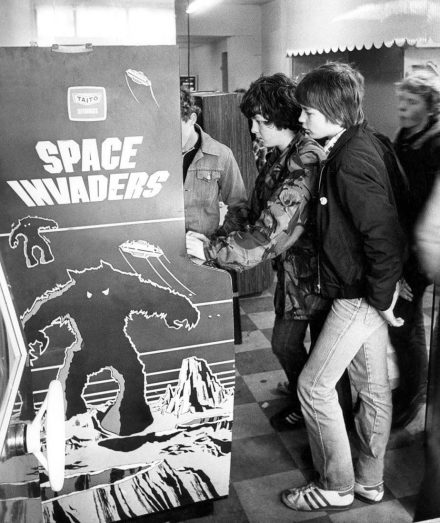
But what about the arcades themselves? One of my favourite Youtubers grew up in a British seaside town and – like me – spent his youth in the oceanfront arcades. He has more than once mentioned how he has very specific memories of playing the games but no longer has clear memories of the arcades that he played them in.
Do I? How clearly can I recall the arcades of my youth? Let’s find out.
I’ve picked three for this post: one in Newcastle city and two in Charlestown. These were probably the three I spent the most time in and – one would imagine – the ones I have the strongest memories of. There were of course many others, as well as countless hours spent playing video games in shops/cinemas/malls etc. For each arcade I have attempted to sketch the floorplan and list some memories. I’m relying on BS, AW and MMC to correct me where I (certainly) make mistakes. Let’s go…
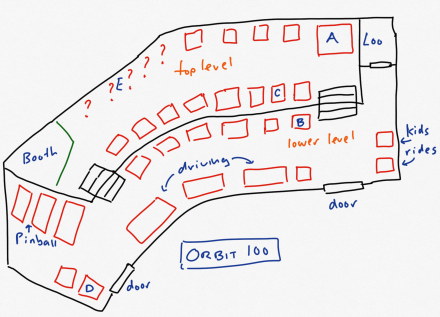
Orbit 100 (Newcastle CBD)
Of course we start with Orbit 100, the king of Newcastle arcades in its prime. Even from the very start I will admit a slight tinge of haziness in my memory, since I conflate Orbit 100 and Orbit 600 these days and can’t be sure which was which. But I am 90% sure the Newcastle one was 100 and the Sydney (George Street) one was 600, so I’ll stick with that. (Interestingly in my ‘book’ about my return visit in 2000 I called it Orbit 600!)
I don’t know when it opened, but it was definitely very active in the early 1980s. I regularly visited when I was in high school since it was within (more or less) walking distance. It still existed when I left Australia in 1993, but by my visit in 2000 had become ‘Playtime’ and when next I visited Oz (in 2005) was gone for good.
As you can see in my sketch the arcade was two levels with two doors onto King Street very close to the Tower Cinema (which is now also gone). In the early days the arcade was mostly just standup cabinets with a few pinballs, but by the mid 1980s they had dedicated the areas on the inner front wall to cabinet games (large driving games mostly) and the pinballs had moved from the top level to the lower near the left door. Orbit was a very dark, smoky and noisy place, with small circular windows (like portholes) with darkly tinted glass. And yet it was a welcoming arcade, probably because it was slightly farther from the Hunter Street shopping and therefore only attracted enthusiasts.
A on my diagram was where a massive black & white Sprint cabinet seemed to sit for years. It was an ancient and often broken beast, rarely played, but probably kept as a curiosity. B was the showcase spot – the first game a customer would see – that was for what seemed like forever occupied with Dragon’s Lair. I recall they had a TV sitting on top of the cabinet so people that couldn’t get close could watch: this was how popular Dragon’s Lair was when it was released. Other games I recall taking this position included Gauntlet and the Teenage Mutant Ninja Turtles arcade game.
C was where I would often sit on the top level and play imported Japanese cabinets. Of course I had no idea at the time that’s what they were, but Orbit had quite a few untranslated units they must have imported from Japan. These were often shooters, but I recall Tower Of Druaga and (a Japanese) Pac-Land as well. My fondest memories of sitting in the top level included playing Time Pilot and Star Force, both of which I loved in their day.
D was where I sat in 2000 and played Mars Matrix, possibly with AW. This was (and still is) the only time I ever saw or played the arcade version of the game and I remember it was right next to the door since every time someone opened it and walked in the bright sunlight shone onto the screen and irked me 🙂
The ? in the above pic I am unsure about. I think they had cocktail (ie. sitdown) cabinets there, but for weird reasons I also recall Orbit selling snacks and drinks and maybe having a seating area? I know pinballs used to be on the top but eventually moved to the bottom, but I’ll admit I have vague memories of the part of the arcade where I now drew pinballs.
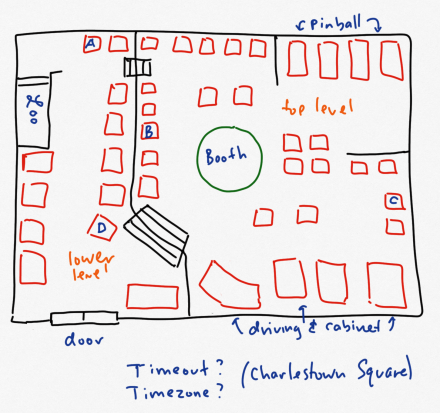
Timeout/Timezone? (Charlestown Square)
Given how I virtually lived in this arcade in Charlestown Square you’d think I’d at least remember the name! The planets aligned in 1989 when I both lived in a house within walking distance of this arcade and one of my best friends (MMC) worked here. Even better, the manager was mum to another friend! While I very often did pay for my games at this place, equally common were the games free, and those few years were the platinum years of my arcade gaming. (Fun fact: the manager trusted me so much she more than once had me walk the bags of coins over to the bank for donation!)
But… my memories of this floor plan also start to fade. Once again it was two-level, and given it was at a mall the front wall was all glass so the biggest and flashiest cabs were at the front to attract players walking by. It was a very bright and colorful place with the game volumes up loud and a family-friendly atmosphere. I expect I – ‘goth’ that I was in those days – was about as unsavory a character as that place saw. Mind you this was many years since the arcades had shed their reputation as hives of villainy.
A was where Bernard and I sunk dollars into Narc to beat it. We got better and better and while the game was as unfair as they come eventually were successful. B was where I played an arcade installment in the Thunderforce series to completion while some girl about my age watched silently. I was aware she was there but given it was an intense shooter didn’t get a good look at her. When I beat it I glanced around to see her and she was no-where in sight! Was she a ghost? I’ll never know. C was where I often beat Black Tiger, Slap Fight or Tiger Heli on one credit. I was very good at arcade games!
When KLS visited Australia in 1992 I took her here (more than once) and on one memorable occasion as I was playing SF2 (at D) some young goon stuck joined in, picked guile, and pointed to my character on the screen and said (out loud) “Your arse is grass.” I thrashed him mercilessly and he shuffled off without a word. It was probably the game superiority I demonstrated at that moment that convinced KLS to marry me 🙂
I can recall that very shortly before I left Australia, possibly the day before, I was in this arcade playing SF2 (as I always did) when I just… stopped and walked away. I could effortlessly beat the game at that point with every character but the urge had left me and I just left the machine mid game. I think I had gone for a distraction from the giant step I was about to make in my life and even the familiarity of my favourite arcade wasn’t distracting enough.
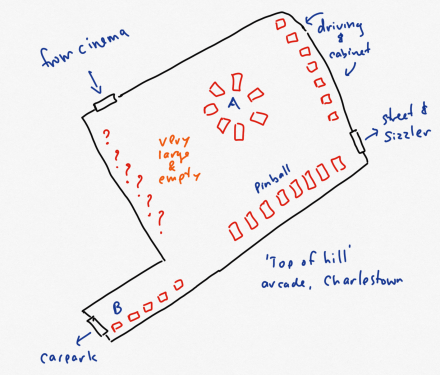
Hilltop Arcade (Charlestown, next to the cinema)
I have no idea what this place was called, nestled as it was between the Hoyts cinema and Sizzler restaurant, but it was – between about 1990 and 1993 – the biggest arcade that I frequented. And the emptiest, which was one reason I liked it!
While it had a lot of games the floorplan was massive with lots of empty space and given that when I visited I was usually the only person there except for the employees it often felt on the edge of insolvency. I recall it had a lot of pinball machines, all lined up against one wall, and I routinely ignored these in favour of the arcade games. This was the early 1990s so of course the place was dominated by fighting game cabinets (Simpsons, TMNT), shooting games (Operation Wolf etc.) and large driving cabinets but – as with Orbit years earlier – they had their fair share of Japanese imports as well (probably Sega Aero City JAMMA cabs if you’re interested) and it was these more than any other reason which attracted me, since I was able to play all manner of weird and wonderful – and often untranslated – games at this arcade.
A was where I first played Street Fighter 2, which would have been 1991 when the game was released. The arcade had a bunch of machines arranged in a circle and I’d ‘shop around’ for good joysticks before playing. I played SF2 here a lot since the place was so unpopular and – for a time – this was one of the few places you could enjoy the game on your own without some goon joining in to grass your arse!
B was a narrow hallway which led to an exit to a car park. People rarely used this exit, and when I sat in this hallway to play games I was usually alone and undistracted. This was where I played Snow Bros enough to eventually beat it, and also where I played a lot of In The Hunt, R-Type Leo and Cameltry. I also recall trying many weird Japanese action games that I had no idea how to play!
One specific memory I have of this place is when an attendant asked me to keep an eye on things while she (I assumed) went to the loo. It must have been just me and her in there at the time, and I think she just asked me to tell anyone that came in that she’d be back soon. She gave me some credits in whatever I was playing (Golden Axe: Return Of Death Adder perhaps?) before she left and once I had finished – which took a while – she still hadn’t returned! I waited for a while longer before I had to leave myself, and eventually I did. I wonder what she though when she came back!
Even though I’d stay there for sometimes hours at a time I have unusually vague memories of this arcade. The ? on my floor plan are a complete mystery to me, and the wall opposite the pinballs is equally unknown. What was this place called? When did it close? Is it perhaps even still there?
Did it even exist at all?

I could write a post a day on arcade memories and fill a year, but this is enough for now, and it’s time to turn this over to fellow arcade lurkers to correct me and fill in the blanks. I don’t doubt their comments will trigger further memories of my own…
